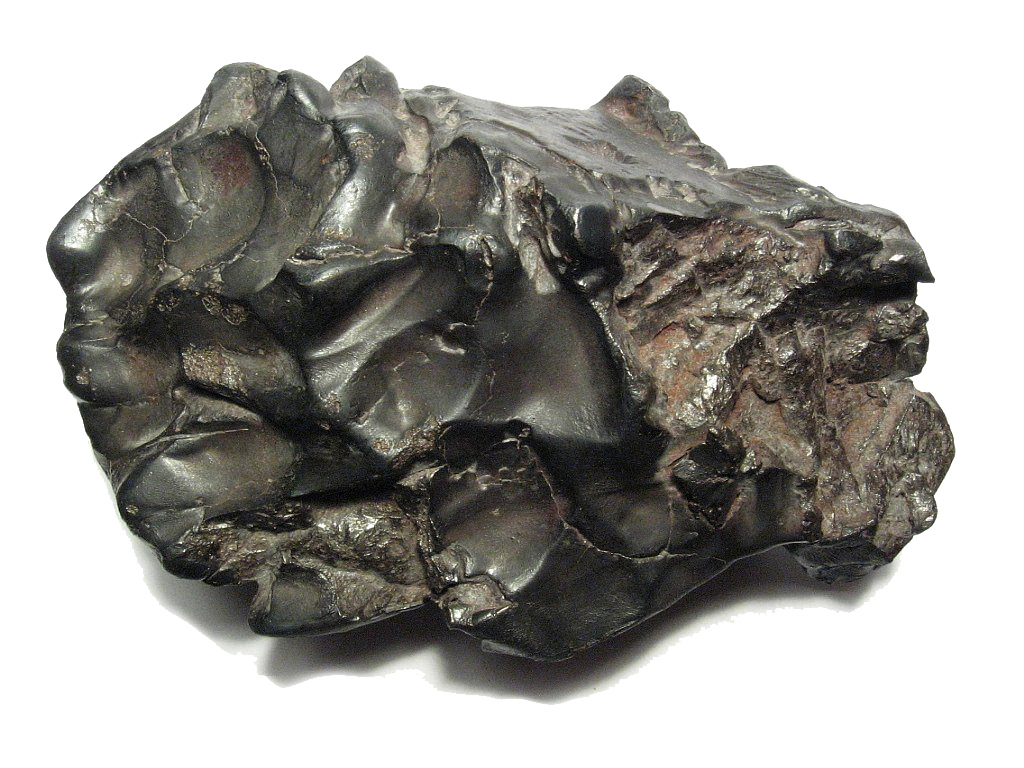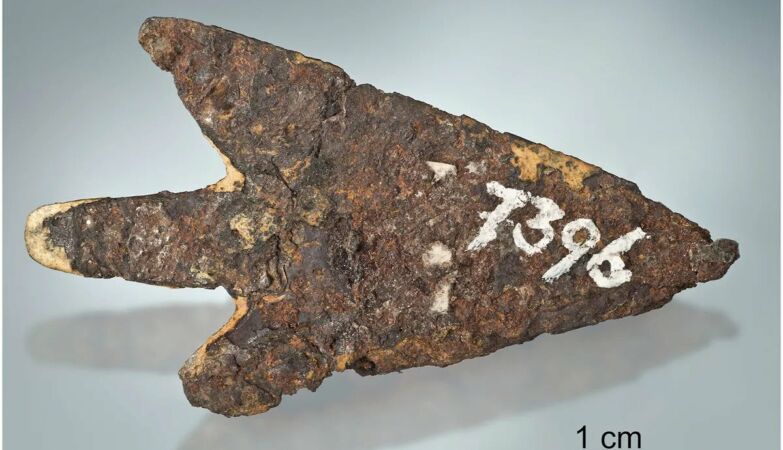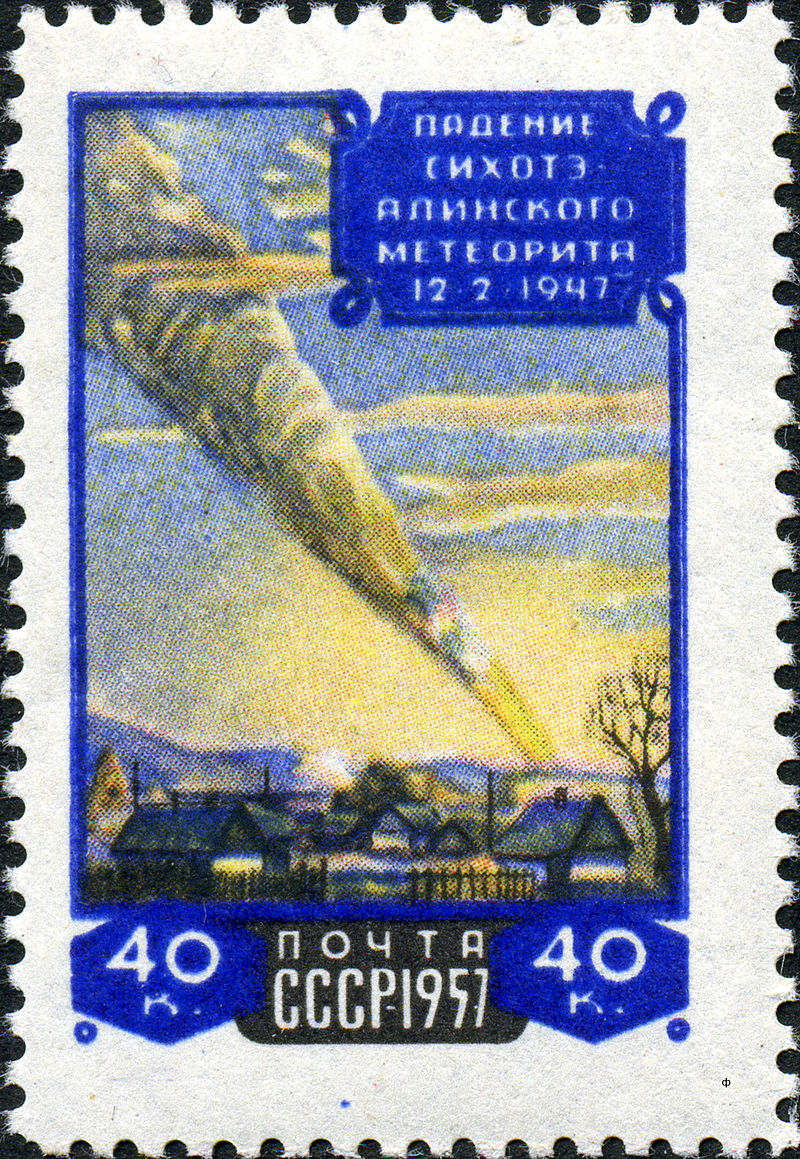An iron meteorite fell on the Sikhote-Alin Mountains, in southeastern Russia, in 1947. Large iron meteorite falls have been witnessed and fragments recovered but never before, in recorded history, a fall of this magnitude. An estimated 23 tonnes of fragments survived the fiery passage through the atmosphere and reached the Earth.
Orbit
Because the meteor fell during daytime, it was observed by many eyewitnesses. Evaluation of this observational data allowed V. G. Fesenkov, then chairman of the meteorite committee of the USSR Academy of Science, to estimate the meteoroid's orbit before it encountered the Earth. This orbit was ellipse-shaped, with its point of greatest distance from the sun situated within the asteroid belt, similar to many other small bodies crossing the orbit of the Earth. Such an orbit was probably created by collisions within the asteroid belt.
Size
Sikhote-Alin is a massive fall with the pre-atmospheric mass of the meteoroid estimated at approximately 90,000 kg. A more recent estimate by Tsvetkov (and others) puts the mass at around 100,000 kg.
Krinov had estimated the post-atmospheric mass of the meteoroid at some 23,000 kg (51,000 lb).
Strewn field and craters
The strewn field for this meteorite covered an elliptical area of about 1.3 km2 (0.50 sq mi). Some of the fragments made impact craters, the largest of which was about 26 m (85 ft) across and 6 m (20 ft) deep. Fragments of the meteorite were also driven into the surrounding trees.
Composition and classification
The Sikhote-Alin meteorite is classified as an iron meteorite belonging to the meteorite group IIAB and with a coarse octahedrite structure. It is composed of approximately 93% iron, 5.9% nickel, 0.42% cobalt, 0.46% phosphorus, and 0.28% sulfur, with trace amounts of germanium and iridium. Minerals present include taenite, plessite, troilite, chromite, kamacite, and schreibersite.
Specimens of the Sikhote-Alin Meteorite are basically of two types:
- individual, thumbprinted or regmaglypted specimens, showing fusion crust and signs of atmospheric ablation
- shrapnel or fragmented specimens, sharp-edged pieces of torn metal showing evidence of violent fragmentation
The first type probably broke off the main object early in the descent. These pieces are characterized by regmaglypts (cavities resembling thumb prints) in the surface of each specimen. The second type are fragments which were either torn apart during the atmospheric explosions or blasted apart upon impact on the frozen ground. Most were probably the result of the explosion at 5.6 km (3.5 mi) altitude.
A large specimen is on display in Moscow. Many other specimens are held by Russian Academy of Science and many smaller specimens exist in the collectors' market.







